The 2013 Open Hardware Summit took place on September 6th at MIT. There was a wide array of demos and talks covering Open Hardware methodologies and projects. After the break I’ll be covering the demo area of the conference, and sharing some of my favorite demos.
The demo area was an open area outside of the theatre where sponsors and makers showed off their works. The area was open all day, and filled up during the social hours, with 500 attendees mingling over food and drink.
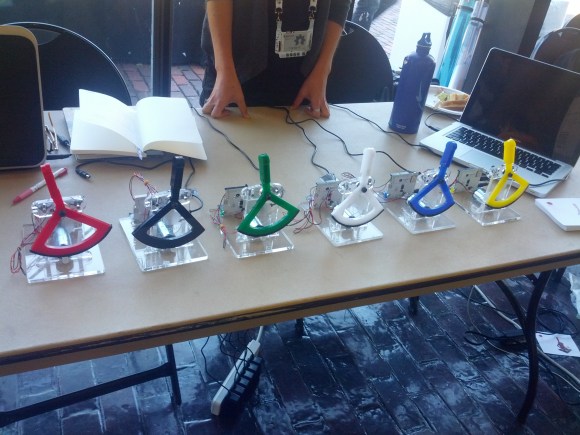
The Hapkit team came in from the Bay Area to show a one degree of freedom haptic feedback kit. The Arduino based kit uses a motor and H-bridge to drive the pendulum, and a magnetoresistive sensor for sensing the position. This allows the software to make the pendulum act as a spring, click wheel, or have it react based on an arbitrary function. The kit would be great as a game controller, or to teach control systems. Hapkit will be available in about a month, but their website provides all the detailed needed to build your own.
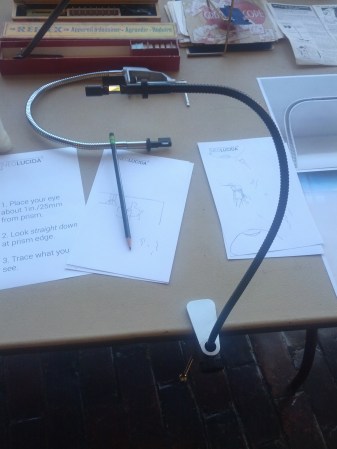
The NeoLucida is a modern day and open hardware Camera Lucida drawing aid. [Pablo] wanted to give his students access to this 200 year old technology, but Camera Lucidas are collectibles and cost over $300. He solved the problem with a prism on a gooseneck. After a unexpectedly successful Kickstarter campaign, he was able to source the prisms in volume and build the devices. It’s also very open: STL files for the parts will be available to download and 3D print, and [Pablo] will sell you just the prism. [Pablo] admitted that it’s really just “a prism on a stick,” but the project has created a strong community and introduced many people to the drawing aid.
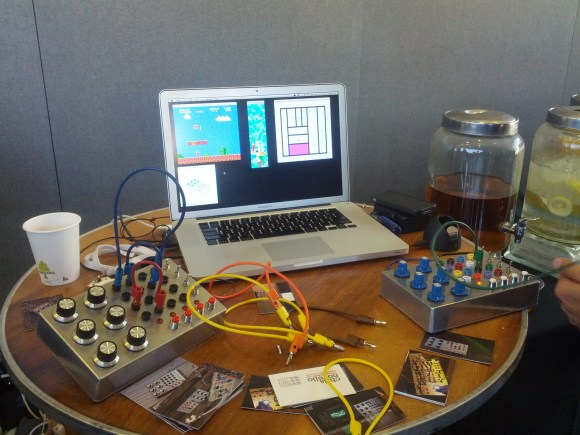
[Chris Novello] showed off Illucia: a physical patch bay for connecting software. Inspired by the retro patch bay synthesizers, this controller lets you interface with software using banana jacks. His demo controlled several games, including an emulator running Mario Bros., using the interface. This made for some interesting visuals and 8-bit sounds. The controller speaks OSC for interfacing with existing software, and is “free and open source everything.” Check out this video that demonstrates one of his interfaces.
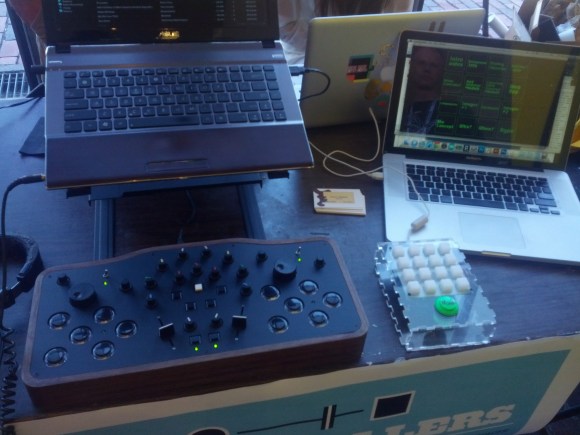
[Fuzzy Wobble]’s thesis project is an open source platform for designing MIDI controllers. The system covers laying out the buttons and switches, fabricating the enclosure, buying the parts, the electronics, and the software. A web app is used to design the controller, and spits out the information required to build all the components. The build quality was very high, with solid walnut and a laser cut top panel. We’ve seen his work in the past, I’m looking forward to seeing the full system in the wild.
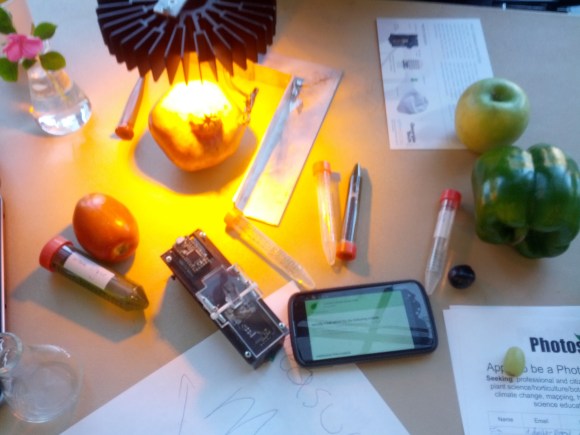
The Photosynq is a tool for measuring plant health to better understand photosynthesis. It works by emitting light and recording what was absorbed by the plant. It also records temperature, CO2 concentration, and humidity. This open research project hopes to crowd source the collection of plant data by building a simple, low cost device for taking measurements. Their demo showed the device taking measurements, then transferring data to a phone over Bluetooth. Data is tagged with a GPS location, then uploaded to their database. They are currently looking for beta testers, and you can apply here.

The Harvard Self-organizing Systems Research Group deals with swarms of robots. Kilobot is a swarm robot that communicates with its neighbors over an IR beam sent down at the surface under each robot. Using this signal, the robots can be configured to avoid each other, and navigate based on the positions of other robots. A master controller allows for programming of the entire swarm. The name Kilobot comes from the thousand robot swarm they are creating. We’ve actually featured the Kilobot on Hackaday before, but here’s a quick video introduction.
Thanks to all the demoers who took the time to show me their projects. Stay tuned to Hackaday for upcoming coverage of the Open Hardware Summit talks.


















Personally I’m more interested to see what redefinition if any of what “open hardware” is or isn’t that will come out of the summit. Not that I expect is possible to even satisfy even a simple majority.
hapkit was very cool to try out. feeling is believing.